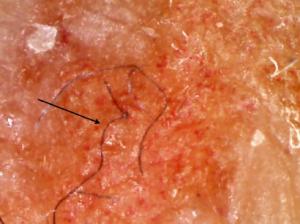Study illustrates strong links between Morgellons and Lyme disease

A study published in the prestigious journal Clinical Cosmetic and Investigational Dermatology illustrates the link between Lyme disease and the mysterious skin condition called Morgellons disease.
The news was hailed by the Charles E. Holman Morgellons Disease Foundation (CEHMDF) of Austin, Texas, an organization supporting research, education, diagnosis and treatment of Morgellons Disease. The investigation was funded by the Called2Serve Foundation of Provo, UT.
The study involved collaboration among an international team of researchers including microbiologist Marianne Middelveen, physician John S. Hagbladd and pathologist Roberto M. Martinez from Calgary, AB, Canada; molecular biologists Julie Lewis and Gilles A. Robichaud from the Université de Moncton, NB, Canada; lab specialists Jyotsna S. Shah and Iris Du Cruz from IGeneX Laboratories in Milpitas, CA; and internist Raphael B. Stricker and nurse practitioner Melissa C. Fesler from Union Square Medical Associates in San Francisco, CA.
Morgellons disease is associated with tick-borne infections, including Lyme disease. Patients with the condition are frequently afflicted with disfiguring skin lesions containing strange microscopic multicolored thread-like filaments. The disease is often accompanied by symptoms characteristic of Lyme disease, including fatigue, joint and muscle pain and neurological problems.
A contested illness
For the past two decades, Morgellons has been a contested illness and the topic of polarized debate. One side maintains it is a delusional mental illness and the other side maintains it is the result of infection.
“This paper strengthens the argument that Morgellons disease is infectious in origin,” says Cindy Casey-Holman, director of the CEHMDF.
“It is heartbreaking that the repeatable solid scientific evidence is not widely accepted by the medical community. The patients are stigmatized. They suffer.”
The patient in this case study suffered from erosive genital ulcerations and skin lesions that varied widely in appearance. Regardless of their location and pathological features, the skin rashes all displayed fibers typical of Morgellons disease.
Sensitive molecular and histochemical testing revealed that the bacterium Borrelia, the causative agent of Lyme disease, was present in vaginal cultures, serum and skin specimens.
“The lesions present in this study are comparable to secondary syphilis in that they show progressive stages of infection,” explains Dr. Stricker. “With antibiotic treatment the lesions improved considerably and the patient recovered.”
One of the reasons why Morgellons disease remains controversial in medicine is that when it comes to Lyme disease many doctors rely on outdated, insensitive testing. The testing for Borrelia in this study was comprehensive, and involved the international collaboration of researchers from different laboratories using various sensitive methodologies.
“This was a very challenging diagnostic case,” said Dr. Hagbladd. “I am pleased that we could get to the root of the problem and alleviate the patient’s suffering. That’s what medicine is all about.
SOURCE OF PRESS RELEASE: Charles E. Holman Morgellons Disease Foundation




















We invite you to comment on our Facebook page.
Visit LymeDisease.org Facebook Page